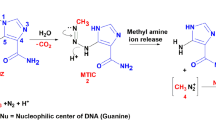Abstract
Brain and spinal tumors are the second most common malignancies in childhood after leukemia, and they remain the leading cause of death from childhood cancer. Autophagy is a catabolic cellular process that is thought to regulate chemosensitivity, however its role in pediatric tumors is unknown. Here we present studies in pediatric medulloblastoma cell lines (DAOY, ONS76) and atypical teratoid/rhabdoid tumor cell lines (BT-16, BT-12) to test this role. Autophagy was inhibited using siRNA against autophagy-related genes ATG12 and ATG7 or pharmacologically induced or inhibited using rapamycin and chloroquine to test the effect of autophagy on chemosensitivity. Autophagic flux was measured using Western blot analysis of LC3-II and p62 and cell viability was determined using MTS assays and clonogenic growth. We found that when pediatric brain tumor cells under starvation stress, exposed to known autophagy inducers such as rapamycin, or treated with current chemotherapeutics (lomustine, cisplatin), all stimulate autophagy. Silencing ATG12 and ATG7 or exposure to a known autophagy inhibitor, chloroquine, could inhibit this autophagy increase; however, the effect of autophagy on tumor cell killing was small. These results may have clinical relevance in the future planning of therapeutic regimens for pediatric brain tumors.







Similar content being viewed by others
References
Mizushima N (2007) Autophagy process and function. Genes Dev 21(22):2861–2873
Qu X et al (2003) Promotion of tumorigenesis by heterozygous disruption of the beclin 1 autophagy gene. J Clin Invest 112(12):1809–1820
Yue Z et al (2003) Beclin 1, an autophagy gene essential for early embryonic development, is a haploinsufficient tumor suppressor. Proc Natl Acad Sci USA 100(25):15077–15082
Marino G et al (2007) Tissue-specific autophagy alterations and increased tumorigenesis in mice deficient in Atg4C/autophagin-3. J Biol Chem 282(25):18573–18583
Takahashi Y et al (2007) Bif-1 interacts with Beclin 1 through UVRAG and regulates autophagy and tumorigenesis. Nat Cell Biol 9(10):1142–1151
Liang C et al (2006) Autophagic and tumour suppressor activity of a novel Beclin1-binding protein UVRAG. Nat Cell Biol 8(7):688–699
Maiuri MC et al (2009) Control of autophagy by oncogenes and tumor suppressor genes. Cell Death Differ 16(1):87–93
Degenhardt K et al (2006) Autophagy promotes tumor cell survival and restricts necrosis, inflammation, and tumorigenesis. Cancer Cell 10(1):51–64
Kenific CM, Thorburn A, Debnath J (2010) Autophagy and metastasis: another double-edged sword. Curr Opin Cell Biol 22(2):241–245
Takamura A et al (2011) Autophagy-deficient mice develop multiple liver tumors. Genes Dev 25(8):795–800
Hippert MM, O’Toole PS, Thorburn A (2006) Autophagy in cancer: good, bad, or both? Cancer Res 66(19):9349–9351
Kondo Y et al (2005) The role of autophagy in cancer development and response to therapy. Nat Rev Cancer 5(9):726–734
Levine B, Kroemer G (2008) Autophagy in the pathogenesis of disease. Cell 132(1):27–42
Garcia-Escudero V, Gargini R (2008) Autophagy induction as an efficient strategy to eradicate tumors. Autophagy 4(7):923–925
Lin MH, Liu SY, Liu YC (2008) Autophagy induction by a natural ingredient of areca nut. Autophagy 4(7):967–968
Turcotte S, Sutphin PD, Giaccia AJ (2008) Targeted therapy for the loss of von Hippel–Lindau in renal cell carcinoma: a novel molecule that induces autophagic cell death. Autophagy 4(7):944–946
Thorburn J et al (2009) Autophagy regulates selective HMGB1 release in tumor cells that are destined to die. Cell Death Differ 16(1):175–183
Amaravadi RK et al (2007) Autophagy inhibition enhances therapy-induced apoptosis in a Myc-induced model of lymphoma. J Clin Invest 117(2):326–336
Carew JS et al (2007) Targeting autophagy augments the anticancer activity of the histone deacetylase inhibitor SAHA to overcome Bcr-Abl-mediated drug resistance. Blood 110(1):313–322
Park MA et al (2008) Regulation of autophagy by ceramide-CD95-PERK signaling. Autophagy 4(7):929–931
Wu H et al (2006) Elongation factor-2 kinase regulates autophagy in human glioblastoma cells. Cancer Res 66(6):3015–3023
Mizushima N, Yoshimori T (2007) How to interpret LC3 immunoblotting. Autophagy 3(6):542–545
Ito H et al (2005) Radiation-induced autophagy is associated with LC3 and its inhibition sensitizes malignant glioma cells. Int J Oncol 26(5):1401–1410
Wu H et al (2009) Silencing of elongation factor-2 kinase potentiates the effect of 2-deoxy-d-glucose against human glioma cells through blunting of autophagy. Cancer Res 69(6):2453–2460
Levy JM, Thorburn A (2011) Targeting autophagy during cancer therapy to improve clinical outcomes. Pharmacol Ther 131(1):130–141
Komatsu M et al (2006) Loss of autophagy in the central nervous system causes neurodegeneration in mice. Nature 441(7095):880–884
Fimia GM et al (2007) Ambra1 regulates autophagy and development of the nervous system. Nature 447(7148):1121–1125
Shingu T et al (2009) Inhibition of autophagy at a late stage enhances imatinib-induced cytotoxicity in human malignant glioma cells. Int J Cancer 124(5):1060–1071
Acknowledgments
JM Mulcahy Levy is supported by a St. Baldrick’s Foundation Fellowship. Additional support provided by The Morgan Adams Foundation and NIH grant CA150925. We thank Dr. Rajeev Vibhakar for providing the ONS76 cell line and Dr. Peter Houghton for providing the BT-16 and BT-12 cell lines.
Author information
Authors and Affiliations
Corresponding author
Rights and permissions
About this article
Cite this article
Levy, J.M.M., Thorburn, A. Modulation of pediatric brain tumor autophagy and chemosensitivity. J Neurooncol 106, 281–290 (2012). https://doi.org/10.1007/s11060-011-0684-4
Received:
Accepted:
Published:
Issue Date:
DOI: https://doi.org/10.1007/s11060-011-0684-4




